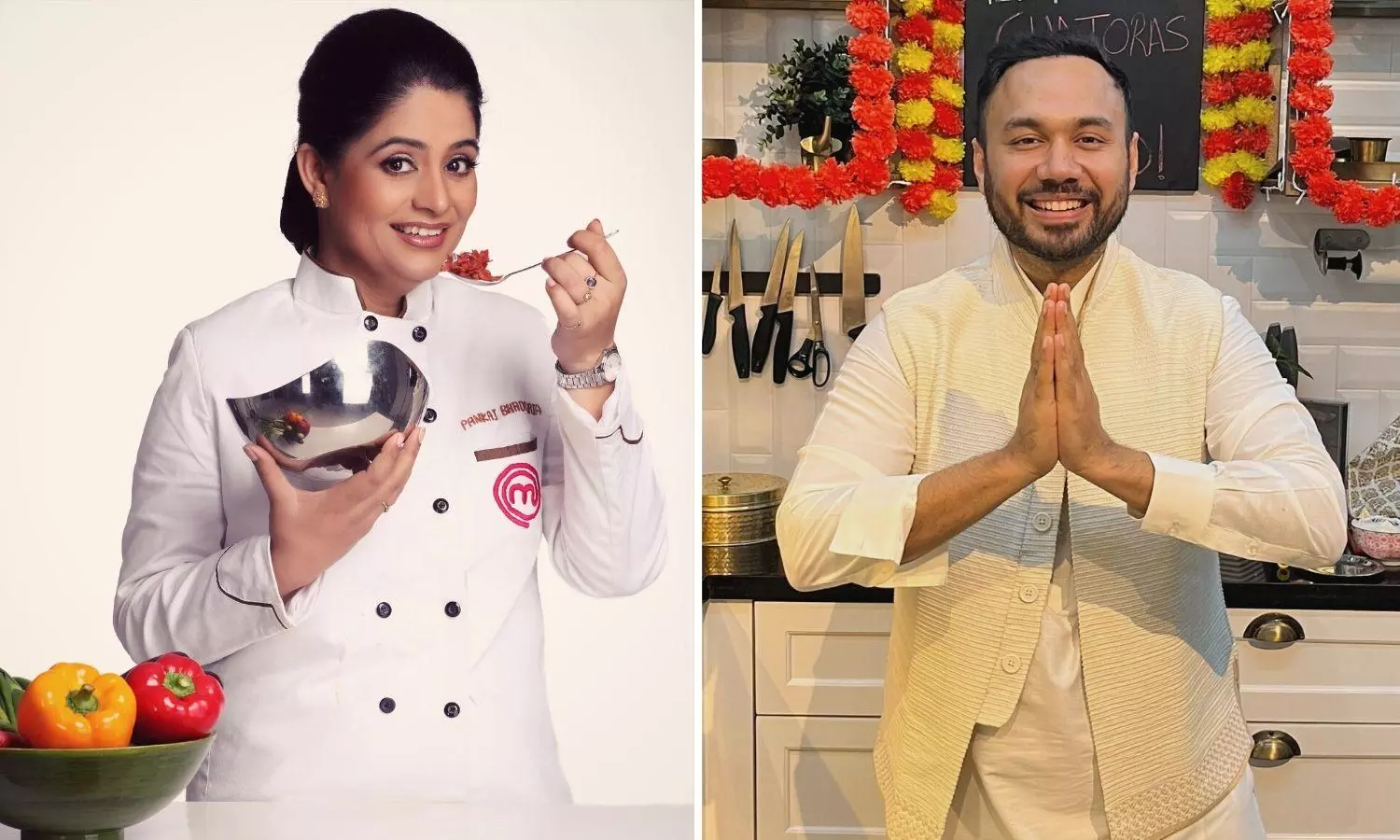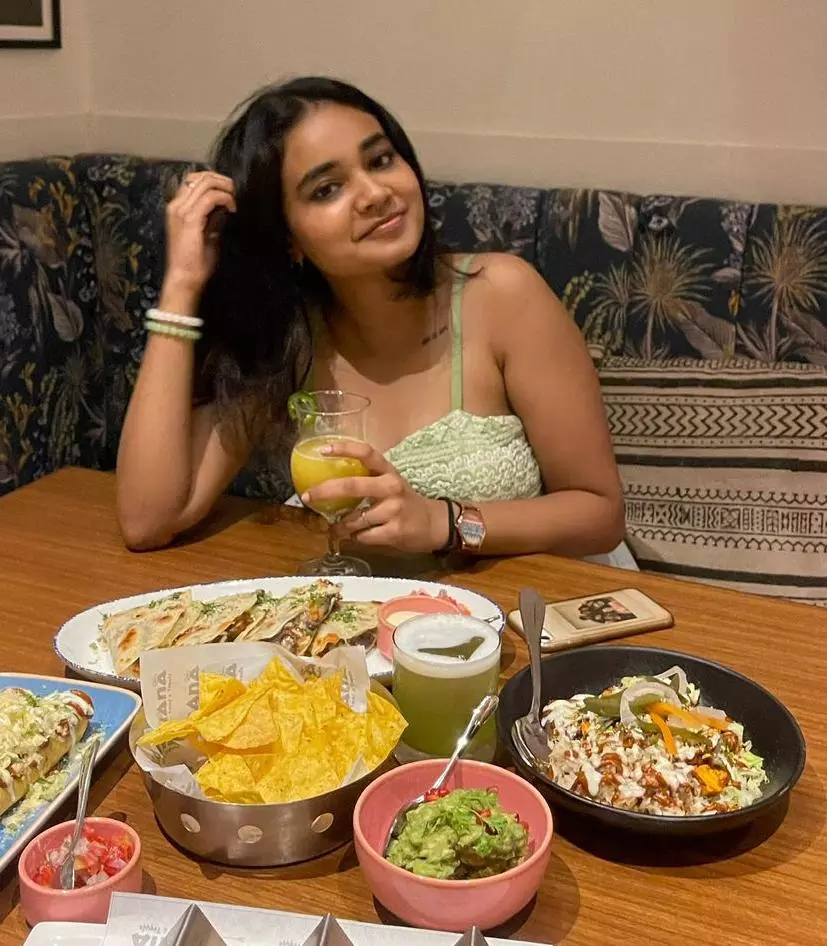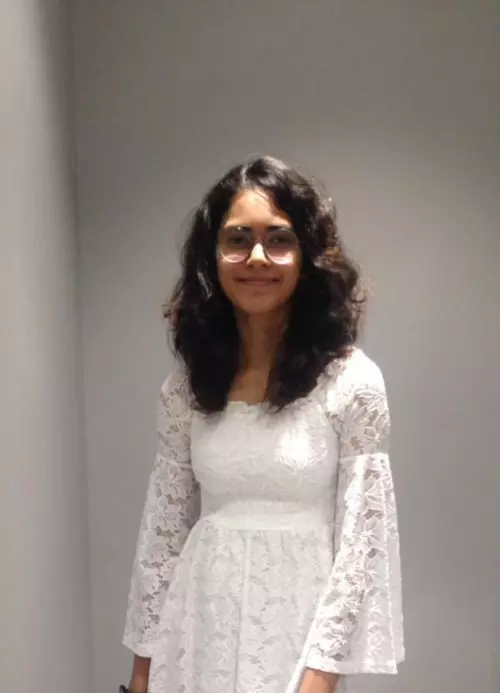Lighting up the Diwali festivities at IFN with chefs Pankaj Bhadouria and Saransh Goila
Read along to get a glimpse of what the Diwali festivities are all about at the Bhadouria and Goila houses
- Inputs from Ananya GandhiLoading...&
- Natasha KitturLoading...
- | 6 Nov 2023 10:30 AM IST
 X
X
As the leaves turn golden and the air carries a hint of festivity, we find ourselves on the cusp of the Festival of Lights, Diwali. A time when homes are adorned with twinkling lights, the sweet aroma of traditional delicacies wafting through the air and laughter resounding in every corner. It's a celebration that brings families and communities together, a time of joy and jubilation that transcends borders and cultures. To truly capture the essence of this vibrant festival, we sat down with culinary maestros Chef Pankaj Bhadouria and Chef Saransh Goila to get a sneak peek into how these experts celebrate the festival. And needless to say, these two renowned chefs have not only mastered the art of crafting delectable dishes but have also embraced the spirit of Diwali in their own unique ways (and you’re just going to have to read the interview to know how). Their traditions, culinary delights and heartfelt anecdotes are sure to inspire your own celebrations.
So, dive into our exclusive interview to discover how these culinary wizards infuse Diwali with flavour and fervour, and let their stories ignite your festive spirit!
Edited excerpts from the interview
1. Growing up as a child, what was that one dish/recipe that you always looked forward to having every Diwali?
Pankaj Bhadouria: When I was a child, during the festive season one dish was mandatory and that was jalebi with dudh. I have a lot of sweet memories attached to the dish, and we’d also offer it as prasad to Goddess Lakshmi. Apart from this my mom would also prepare for Diwali with sweets, like narkel laddu, gujiya, besan ladoo and a lot more. We’d just make a day out of this where all of us would help each other to get things ready for Diwali. So I have beautiful memories with all of these dishes, but yes, jalebi with dudh will always stand out.
Saransh Goila: I come from a Marwadi family, so the menu for Diwali was always a 100% festive and traditional vegetarian menu. And believe me, these were all dishes that I would always look forward to, even today. We’d have a aloo ki sabzi with puris, parathe, chole bhature, jalebis and obviously motichur ke ladoo. Motichur ke ladoo was a non-negotiable.
2. Can you share a memorable moment or experience that significantly shaped your cooking style?
PB: So I was lucky I was blessed with the Bengali mother and the Punjabi father, I must say. And then add to the fact that I grew up in a very cosmopolitan area in Delhi. And a little while before I got married I moved to Lucknow, and you don’t need me to tell you the beauty of Lucknowi cuisine, I’m sure you already know. So I’d say my entire life has been a major influence on my cooking style. I learned from my parents, especially my dad and from the places I lived in.
SG: Growing up, watching my grandfather cook for us has definitely served as an inspiration for me. And he'd always make Pahadi-style food, since he belonged to Nainital. While these moments have influenced my view on food, I also used to watch a lot of food shows, you know, Khana Khazana and such. This is what helped me develop an interest in the world of food. And of course, one can never underestimate the power of books. Reading about food I began to realise how much I loved cooking and that I can actually make this my passion and career.
3. How do you stay updated with the latest culinary trends, and how do you balance tradition and innovation in your cooking?
PB: So for one thing, I'm a voracious reader. If I happen to have some free time, you'll find me reading. And now in the digital age you don't even need a physical copy, my phone keeps me connected to the world every minute. I keep up by staying informed about different countries, their cultures, their food, how their food has been influenced by so many factors and so on. This way I am always aware of the trends of current times and I try to replicate in my work and teachings.
SG: Keeping up with the world can be a little tricky sometimes, you know with so much fast moving content. So when it comes to this I have one and only one mantra: You need to be open and accepting of new ideas. I generally reserve my weekends to do my research, and by research I mean consume content on the weekends, trying to understand what's new and happening around the world. I am somewhat of a traditionalist who loves regional food. So current trends can sometimes be a little tricky for me. Sometimes I feel experimental and I will try something new like a Sindhi Kadhi Ramen Broth or melting jeera aloo and sometimes I just want to follow the traditional recipes to the T without trying to incorporate the trends.
4. Do you practice any unique traditions or rituals at home during the festive season?
PB: Oh yes! Absolutely! As far as the Bhadouria House is concerned, we do prepare a few dishes that are very traditional. One special dish that we make every year is Matthe Ke Aloo, which is basically potatoes cooked with buttermilk and it has very simple clean flavours. We also have chane ke dal ke parathe and a halwa made with parathas to go with it; and finally a kaddu ki sabzi. These dishes are a staple in the Bhadouria House, not just during Diwali, but almost every festival that we celebrate.
SG: So at the Goila house, the traditions are set in stone. My sister takes the initiative to make the rangoli and all of us help her out in any way we can. When it comes to food this is where our traditions become a little unconventional. The most unique thing I can think of right now is the fact that we have Churma for breakfast, which isn't traditionally a breakfast food. But we love it, and it's a little house ritual, so we indulge in it anyway.
P.S: I just moved into my own house now so hopefully here onwards we will have our own traditions soon.
5. Are there any specific cuisines or regions of the world that inspire you the most?
PG: Back when I visited Japan for a culinary tour, I fell in love with their cuisine. And that has stuck with me as an inspiration. I had also visited Israel, on the invite of the Israeli Embassy along with 12 other chefs, and this tour was an eye-opener for me as I had never imagined Israeli food in its true authenticity. With people from all across Europe dwelling in Israel, I could actually call it a cultural hot-pot, and needless to say, this influence is very evident in their cuisine and it is all so very beautiful. I am inspired by Italian cuisine as well, given the fact that a lot of their recipes are easy to replicate in a home kitchen, you don't have to go hunting for exotic ingredients. Talking in terms of Indian food, I am a true blue fan of the Lucknowi and Awadhi cuisine. And of course, in my opinion, nothing will ever compare to Indo-Chinese cuisine.
SG: Here I'd definitely have to mention Japanese cuisine. Their affair definitely fascinates and intrigues me. Right from the technique of cooking, the precision involved, the presentation and finally the overall simplicity of the food. It just blows my mind. I’m also taking a trip to Japan this month so I'm really excited to try out all these dishes that I have heard about or seen and learn new techniques.
6. What's your go-to Diwali comfort food when you're not in the mood to cook something fancy?
PB: I am pretty sure this is the story of every household. Where we are gorging on a number of sweets and snacks throughout the day that no one is actually hungry once meal time comes. I say, save your efforts and don’t overwork yourself in the kitchen trying to make a full course festive meal. At such times I go in for one pot recipes like a mushroom biryani or vegetable biryani with raita. So it’s a little festive also, but does not require much effort either.
SG: Let’s just start with the fact that I love all the home invites I get for Diwali dinners. So half the battle of ‘what to cook for the festive season’ is won there. As a chef and food enthusiast, food always ends up taking my attention invariably, so visiting houses during the festive season I feel is the best way to try out different varieties of dishes, since every house has their own traditions when it comes to festive food. For instance everyone has different faral platters, which I really love. And when the festive food becomes too much I go in for something non-Indian, like Japanese or Mexican food.
7. Do you have any cooking hacks for busy Diwali hosts to save time in the kitchen?
PB: So, the festive season inevitably means that you are going to have many guests in and out of the house. In order to save time with the cooking process, what I do is I pre-prep the starters and appetisers. If the dish needs to be fried I'll half fry and keep them ready, or if I am making canapes, I'll fill up my piping bags with the filling so then on the day of Diwali all I have to do is fill them out and serve. I would definitely recommend preparing in advance and not keep anything for the last day, so that you too can be a part of the celebration. Go in for a lot of finger food, chips and dips and appetisers of such kind, that are easy to make and serve.
SG: Diwali does become a hectic time for hosts, with all the finger food preparations and last minute frying and all that jazz. An easy hack to overcome spending long hours in the kitchen during the festivities is to go in for dishes that don’t require a lot of cooking. For example you could make easy chaat boards, which are essentially an Indian version of cheese boards for a quick snack. They are really easy to make and will also give you that extra time to spend with your guests.
8. If you had to choose one Diwali mithai to enjoy for the rest of your life, what would it be?
PB: Undoubtedly it would be the boondi ke laddoo. And not just any boondi ke laddoo, only the ones from Ritz, Lucknow.
SG: Hands down, it will have to be the Sindhi Sev Barfi, made with fresh sev, khoya and milk.
9. Could you give us a sneak peek into any exciting projects or collaborations you may be working towards?
PB: Currently we are looking to expand our Academy to more cities. And there are a couple of brand collaborations in the pipeline as well, but multiplying the Pankaj Bhadouria Culinary Academy is my primary focus.
SG: Well, like I said, I will be visiting Japan in November so I'm definitely excited for that. I will also be featuring on this season of Masterchef, so stay tuned for that. And obviously, we will be having a lot of festive specials this festive season. So I'm just looking forward to it all.

Ananya Gandhi
Ananya grabs at every chance she gets to spend time with strangers listening to their stories, painting or reading some romantic-thriller novel almost everywhere. Her love for food encompasses everything from crispy fried chicken to a creamy cheesecake. And this combined passion for food and creativity, paired with a knack for social media enables her to make some fascinating content for her Instagram.

Natasha Kittur
Natasha Kittur is an aspiring writer. Her love for anything with cheese and spice is profound, but a white sauce pasta always tops her list. In her free time you will catch her reading or watching crime books and shows or go on and on about psychological experiments and theories. She aims to write a book in the fictional genre someday.


